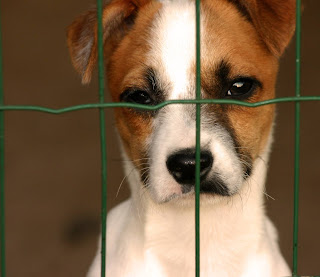Pigmentation in a dog’s nose is determined by genetic factors, just the same as hair color. Depending on the breed, the dog’s nose may be black, pink, liver colored, or self colored (same color as coat). But, what does it mean if your dog’s nose changes color? If your dog’s nose is turning pink, specifically turning from black to pink, there could be many causes for the loss of pigmentation. Sometimes the change indicates a medical condition, and other times, a dog nose turning pink is a completely natural part of aging.
The most common cause of a fading nose is called “snow nose” or “winter nose,” because the dog’s nose will fade to pink or white during the winter months, and return to black once summer arrives. Labrador Retrievers, Golden Retrievers, Bernese Mountain dogs, and Siberian Huskies have this seasonal variation in the color of the nasal planum. Some dogs within these breeds, and even dogs of other breeds, have noses that change from black to brown or pink as the animal ages. The cause is thought to be a breakdown of a certain enzyme called tyrosinase, which is responsible for producing pigment. Apparently, the enzyme becomes less efficient as the dog ages, causing the nose to fade from black to brown or pink. Tyrosinase is also temperature sensitive; it works more effectively in warmer weather, which explains the fading of the nose during winter months. While a dog with a completely pink nose (also known as a Dudley nose), can be disqualified from the show ring (depends on breed), dogs with originally black noses that fade to pink are still allowed to be shown.
Physical ailments and medical conditions may also cause a dog’s nose to fade from black to pink. Sometimes, the dog will lose pigment due to an illness or trauma, and then recover the pigment once healed. If your dog’s nose is scraped or suffers abrasion, it will usually turn pink as it heals, then to black once the scabs are gone. Contact dermatitis can also cause loss of pigmentation in the nose. Certain dogs are sensitive to plastics in food dishes, and the continual irritation will cause the nose to turn pink; the lips will also become inflamed. Switching to stainless steel food and water bowls will eliminate the possibility that your dog is suffering from contact dermatitis.
Vitiligo is an immune disease in dogs that will cause a pink nose, but dogs with vitiligo will commonly have white patches or hairs throughout the rest of their bodies. In animals with vitiligo, antibodies are formed against pigment-containing cells that are responsible for nose color. The antibodies destroy these cells, resulting in loss of color. A veterinarian can do a biopsy to confirm this diagnosis. Certain breeds are at greater risk for this disease, such as Doberman Pinschers, German Shepherds, Rottweilers, and Dachshunds. While the dog’s health is not adversely affected by this disease, nutritional supplements may help to restore the dog’s pigment.
If you have a dog with a pink nose, make sure that you protect him in the summer by applying sunscreen to avoid painful sunburn. While a black or brown nose is safe, a pink nose will burn and may blister if the sun damage is severe. Pink noses are accordingly more at risk for the development of cancer. In some cases, an owner can choose to have his dog’s nose tattooed with black ink to protect it from the sun. This practice is more common in dogs such as the Collie who will get nasty ulcerations from sun exposure.
Though the dog’s nose is one of his most important features, knowledge is lacking as to the reasons for color change, loss of pigment, and why some dog’s noses fade while others do not. If your dog’s nose is changing color, but he is otherwise happy, healthy, and maintaining a normal activity level, he is probably fine. If his nose is blistering, or seems chapped or dry, consult a veterinarian to see if there is a health reason behind your dog’s changing nose. A dog nose turning pink happens more often than most dog owners realize. Research your breed’s tendencies, seek help for a damaged nose, and make sure to protect your dog’s new pink nose from the sun!
(Article from Professorshouse)



